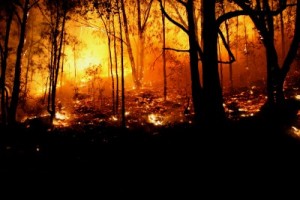As with Colorado and other areas in the southwest United States, New Mexico and Arizona are now inundated with wildfires.
Horse evacuation plans have been put into place in Colorado, and roads have been closed, re-opened, and closed again as the fires continue to shift and change daily.
In New Mexico, two major fires caused by lightening (the Jaroso Fire and the Silver Fire) are burning rapidly, with only 45 % of the Silver Fire contained. Fire crews have been battling both fires since early June, but so far have made little headway due to the shifting winds.
The towns of Yarnell and Peeples Valley, Arizona have now been evacuated due to fires that have burned over 8,000 acres since June 28, 2013.
Wildfire Season Getting Longer
According to scientists, an analysis of data going back to 1970 shows that wildfires increased “suddenly and dramatically” in the 1980s, and the wildfire season has gotten longer. Beginning in 1987, there was a change from infrequent fires burning for an average of one week to more frequent fires that burned five weeks or more. The average length of the wildfire season has now extended 78 days[i].
Researchers believe these changes are linked to annual spring and summer temperatures, with many more wildfires burning in hotter years than in cooler years. They also found a connection between early spring snowmelt in the mountainous regions in the United States and the occurrence of large forest fires. An earlier snowmelt can lead to an earlier and longer dry season, which provides greater opportunities for large fires.
Fires And Climate Change
“The increase in large wildfires appears to be another part of a chain of reactions to climate warming,” states Dan Cayan, Director of the Climate Research Division at Scripps Institution of Oceanography. The increase in wildfires adds to the many Earth changes occurring today, signaling a planetary shift.
As the climate warms in the coming decades, atmospheric scientists at Harvard’s School of Engineering and Applied Sciences (SEAS) expect that the frequency of wildfires will increase in many regions around the world. One important type of smoke particle, organic carbon aerosols, will increase, on average, by 40 percent over the next decade, and this, in turn, will contribute to even more global warming.
“It all fits together,” said climate researcher Anthony Westerling, Scripps Institution of Oceanography in La Jolla. “The fire seasons are starting earlier and running longer. It is consistent with a changing climate.”
[i] The Associated Press. Wildfires May Be Linked to Global Warming. July 6, 2006.

